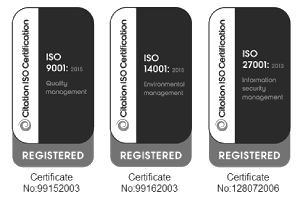Right tree, right place: Meeting climate change targets sustainably
In 2019 it was heartening to see so many local authorities responding positively to the UK’s plans to meet net zero by 2050. At least 60 local authorities declared their own climate emergencies underpinned by ambitious woodland creation and tree planting pledges. Like most things in life, creating woods and planting trees is something that can be done well or it can be done badly. Done well not only will it contribute towards our climate change targets but it can also deliver a wide range of other social, environmental and economic objectives. Done badly it won’t achieve any objectives, it will waste resources and may actually do environmental harm.
So how do you get it right? There are 4 key steps:
- Be clear on your objectives
- Assess and understand your site
- Species choice and planning.
- Manage your trees and woods in the long term.
Objectives
Thinking about climate change, the role of trees in absorbing CO2 is one of their obvious strengths. Trees and woods can deliver so much more though and you need to be really clear about what you might want out of yours as that will dictate where and what you plant. Trees in urban areas can absorb noise and air pollution; they can help ameliorate surface water flooding and are great for wildlife. In both rural and urban areas, they can offer shade and shelter from our changing climate, a source of timber, wood fuel, fruit and nuts; mitigation against soil erosion and poor water quality and pollination benefits. On top of that they look fabulous! COVID-19 has only served to emphasise the mental health benefits of green space for us all. Many objectives are locationally dependent. So, if your objective is a reduction in air quality, you will need to be looking at locations near pollution sources e.g. busy roads and intersections.
The site
Once you know your objectives you can then start to look for suitable sites to deliver those objectives. There will need to be a whole range of issues that you will need to think about; soil, topography, exposure, overhead and underground services, current biodiversity value, access and views, archaeology, sense of scale and landscape impact. You will need to talk to local people to ensure their views are heard and they feel part of the project; statutory authorities such as Highways, Environment Agency and Forestry Commission may also need to be consulted. It is always helpful to sketch out plans of the site that can illustrate these issues and highlight constraints and opportunities.
Species choice and planning
The information gathered in the first 2 steps will help you come up with some initial concept designs and start to direct you towards certain species. There is a wealth of information out there to support this but there are 2 key things – don’t focus on just one or two species
as that will make your tree population very vulnerable to future disease issues. Diversity is key. Secondly always try and buy trees that have been sourced from UK seed and grown for their entire life in the UK; this will help minimise the risks of importing new diseases on imported trees. There are plenty of excellent nurseries in the UK; talk to them and to people who use them.
Manage your trees and woods in the long term
This is the last but probably the most important step. It is pointless investing in planting trees if you are not going to look after them as they will invariably fail and die. You need to be upfront right from the start on the on-going costs of this maintenance and whose responsibility it is. If you have to, plant less if it means you can look after what you have planted. Make sure you have a written plan detailing responsibilities from the outset.
Conclusions
Trees offer us all the opportunity to make a difference to our local environment. Give yourself plenty of time to plan; there is lots of information out there to help you assess and understand your site e.g. www.magic.gov.uk . Talk to others with experience in this area – Forestry Commission, Trees and Design Action group, Tree Council, Trees for Cities, Woodland Trust, Institute of Chartered Foresters and the Association of Tree Officers. Let’s support each other to get it right and see what a huge difference that can make.
• John delivered a presentation on this topic at the APSE Trees and Woodland Seminar 2020 on 21 October 2020. You can download the presentation here.


.png)



.png)